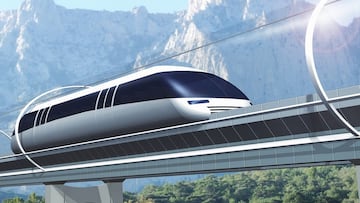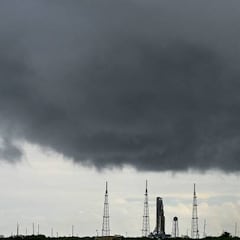China tests the world’s fastest train
The vehicle can reach 1,000 kilometers per hour, given its magnetic levitation system and the vacuum tubes through which it will circulate.

A vehicle that “would almost fly”. This is how they refer to the latest high-speed train that is being successfully tested by a group of scientists from the University of North China. They claim that it will be able to reach a speed of 1,000 kilometers per hour, 625 miles per hour, a quality that would make it the fastest train in the world. This is possible, since it uses technology similar to that of the Hyperloop, Elon Musk’s bullet train.
These, unlike traditional trains, do not work on tracks, they remain suspended in the air thanks to powerful magnets. The circuit, therefore, must be different: they move through tubes almost completely devoid of air. And it is thanks to these two mechanisms that the vehicle can pick up so much speed: thanks to the magnets, it avoids frictional resistance and, with the vacuum tubes, they eliminate air resistance.
The experts have already put their design to the test in a section of two kilometers, in which the train has managed to reach a speed of 130 kilometers per hour, a little more than 80 miles per hour. And, as the Chinese media have announced, they have already planned the next test: it will be a 60-kilometre-long circuit in which they hope to test the maximum potential of the train in terms of speed, the 1,000 kilometers hour.
This new project is part of the modernization that China wants to carry out of its high-speed train network. In the last ten years, Xi Jingping’s country has quadrupled it: going from 10,000 kilometers to 40,000.
An 18th century technology
There are other trains with characteristics similar to the one being tested in China. For example, the Elon Musk bullet train. This is the Hyperloop, whose design also contemplates magnetic levitation and vacuum tubes through which the capsules will circulate with the travelers or the goods to be transported. For this design, there is already a project underway that aims to unite some European cities, such as Berlin, Rotterdam and Munich, among others, with Zaragoza.
Related stories
These mechanisms, however, are not so modern. The first Hyperloop was built in 1799 and was put into operation starting in 1870. It was done by the then mayor of New York, who wanted to offer his citizens the chance to cross Manhattan in half an hour. But the lack of funding saw the project fail.
Later, the UK used a magnetically levitated vehicle for its Birmingham airport shuttle service from 1984 to 1995. Years later, a similar one was installed in Shanghai, connecting the city center with its airport. However, both projects have a defect, which is due to the economic losses they generate. The reason why the British decided to close theirs.


